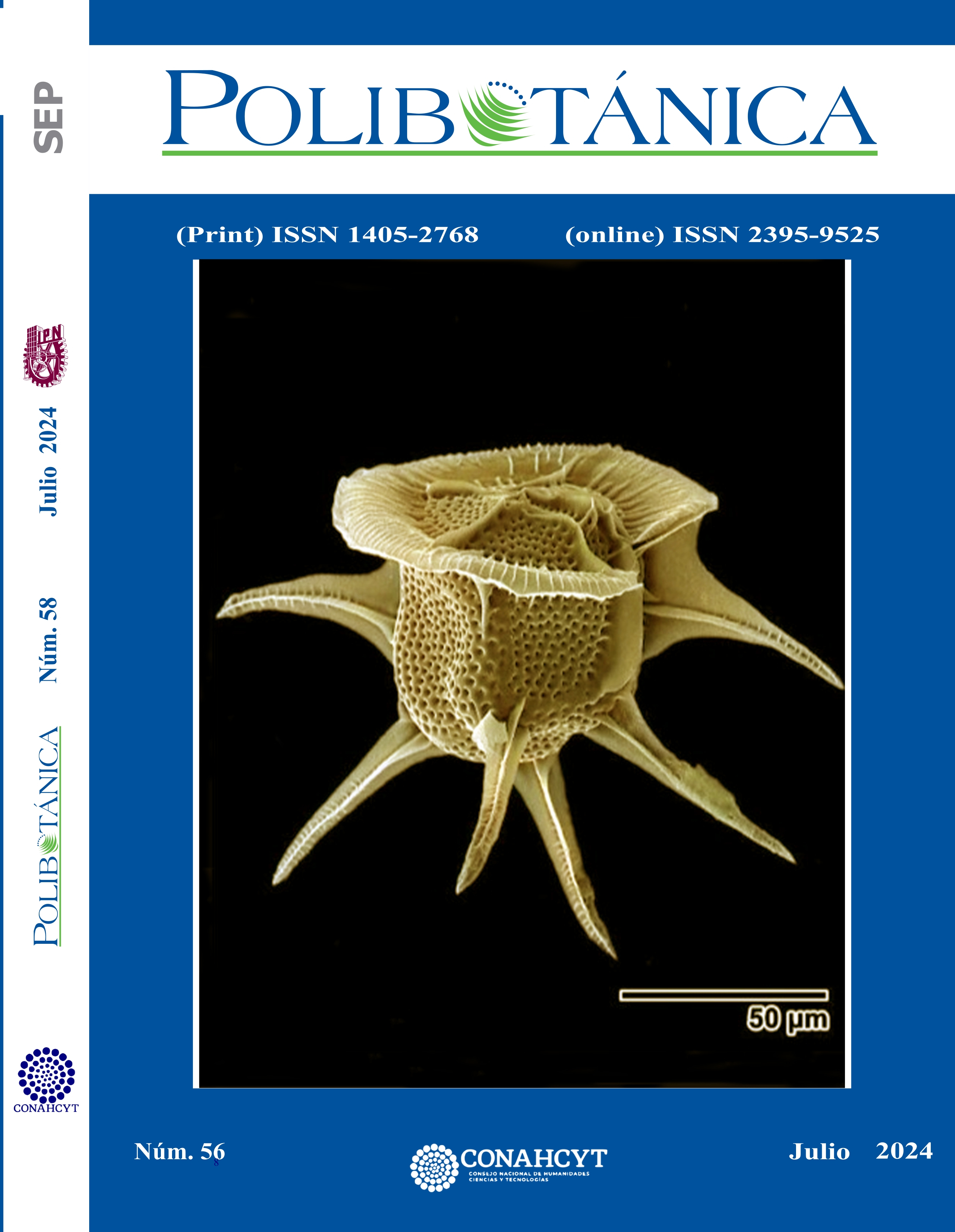Archives
-

POLIBOTANICA 60
No. 60 (30)Bursera fagaroides (Kunth) Engl. Burseraceae. “Copal blanco” or “torote.” A resinous shrub or small tree reaching up to 8 m in height, with thin bark that peels off in papery flakes. Leaves are compound, imparipinnate, with 3–9 leaflets, elliptic to lanceolate, 2–6 cm long. Inflorescences are axillary or terminal, bearing small greenish to yellowish flowers. The fruit is an ovoid drupe that splits into two valves at maturity, revealing a seed partially covered by a reddish aril. Native to regions from southern United States to central and southern Mexico, it grows in tropical dry forests and xerophytic scrublands at elevations ranging from 500 to 1,800 m a.s.l. The plant is rich in aromatic resins,
traditionally used to produce copal for ceremonial and medicinal purposes. -

POLIBOTANICA 59
No. 59 (30)Weed plants are those that grow spontaneously in cultivated environments, often considered as weeds or unwanted plants because they compete with crops for resources such as water, light, and nutrients. Although they are often seen negatively in agriculture, many weed species have ecological, medicinal, or nutritional value and can contribute to the biodiversity of their surroundings. Proper management is essential to balance their impact on agricultural systems.
-

POLIBOTANICA 58
No. 58 (29)Ceratocorys horrida F. Stein 1883 (Oxyphysaceae) is a species of marine dinoflagellate that is part of the phytoplankton, crucial in the aquatic food chain. This organism has a rounded shape with long, thin spines that help it with defense and buoyancy. It is found in nutrient-rich surface and coastal waters, with a global distribution. It can form algal blooms that, although beneficial in moderate levels, can cause eutrophication and produce toxins in excess. It is used in studies of water quality and marine ecosystem health.
-

POLIBOTANICA 57
No. 57 (29)Mushroom with a fan- or shell-shaped cap, covered in erect hairs, ranging from 2 to 4 cm in diameter. When dry, it displays a whitish color that changes to brownish-gray when exposed to moisture, and it is hard and leathery. The hymenium is composed of folds, pseudo-gills, divided into two lighter edges and arranged in a fan-like pattern from the stem. One distinctive feature is that in dry conditions, they retract and close to protect the hymenium, opening up when it is moist. Their color is pink, pink-cinnamon, evolving to darken over time. The stem is lateral and practically nonexistent. It is a lignicolous species that parasitizes or acts as a saprophyte on primarily deciduous trees. It is very common and persists in the substrate throughout the year. It thrives in various dead or living plant substrates and in environments with a warm to temperate climate, occasionally in cold climates in areas with mostly disturbed wild
vegetation, ranging from sea level to nearly 3,000 m in altitude. With a cosmopolitan distribution, they are pathogens in humans. -

POLIBOTANICA 56
No. 56 (28)Jerzy Rzedowski Rotter (1926-2023). Considered one of the most influential botanists in Mexico. He ventured into several botanical disciplines such as taxonomy, floristics, phytogeography, and ecology. He formed several institutional herbaria, and collected samples of Mexican flora, achieving a collection that exceeded 50,000 numbers. He worked on the Phanerogamic Flora of the Valley of Mexico and the Flora of the Bajio and Adjacent Regions; he also wrote the book The Vegetation of Mexico, a classic work of Mexican botanical literature. Throughout his career, he was also dedicated to teaching and training botanists. His work includes the publication of 7 books, 47 book chapters, 128 articles in scientific journals, and 31 fascicles of floras. He discovered about 190 new species of Mexican plants and more than 85 species of Mexican fungi, plants, and animals were named in his honor.



















